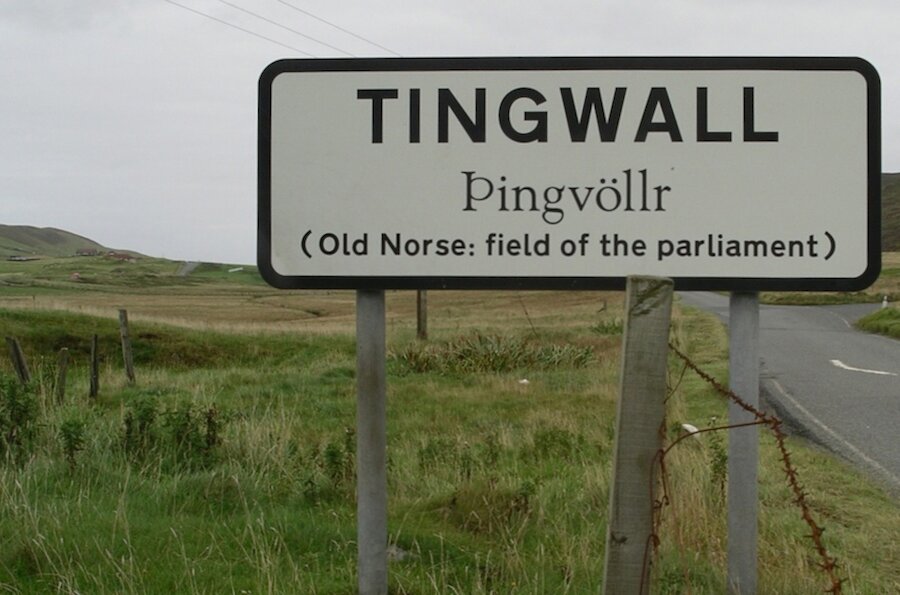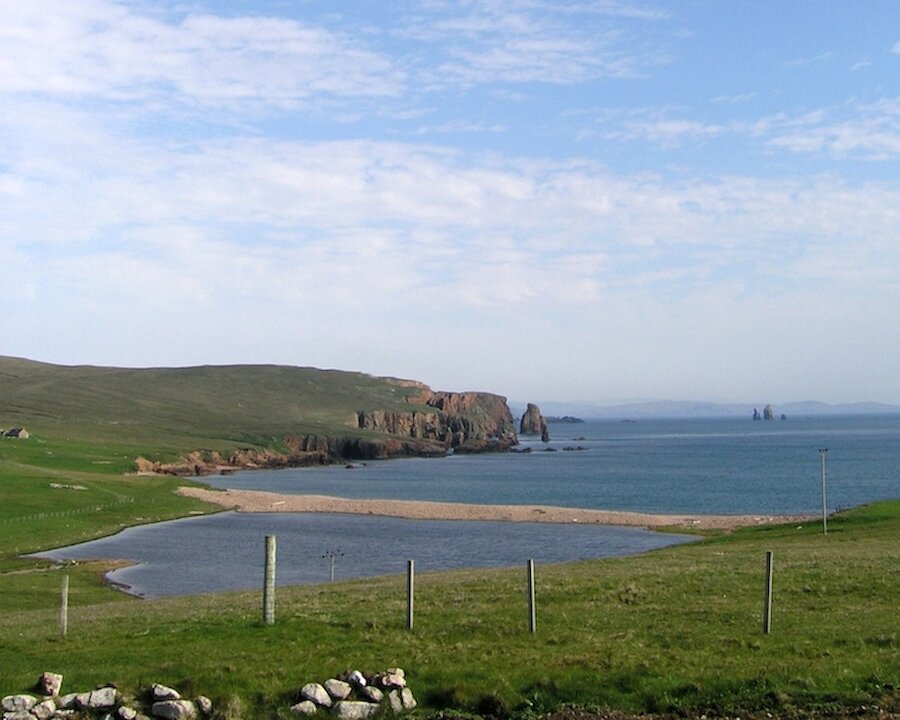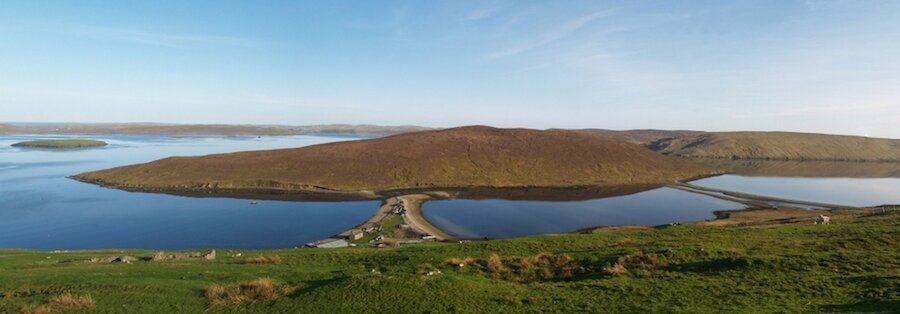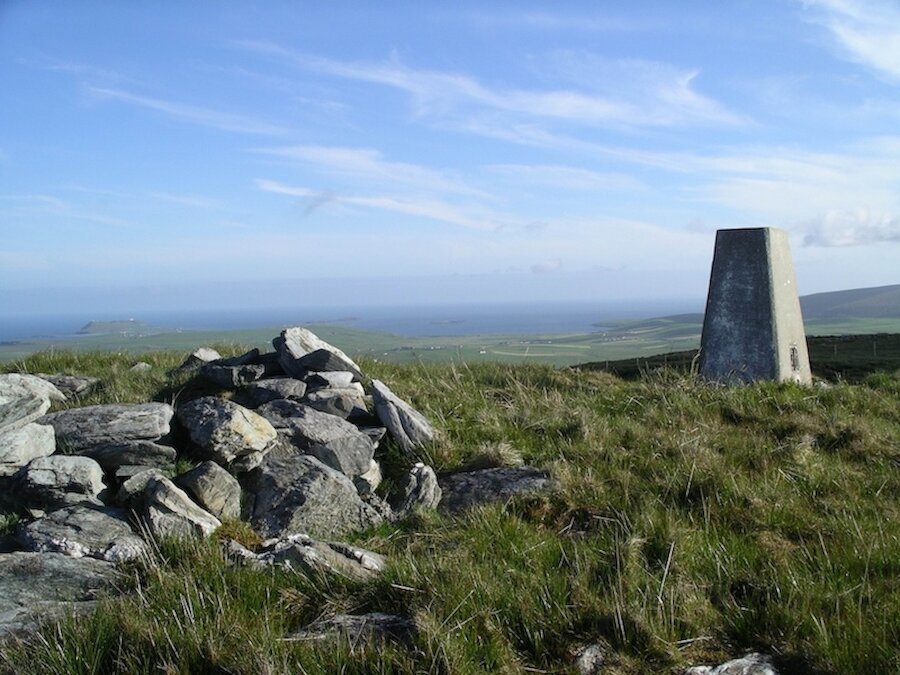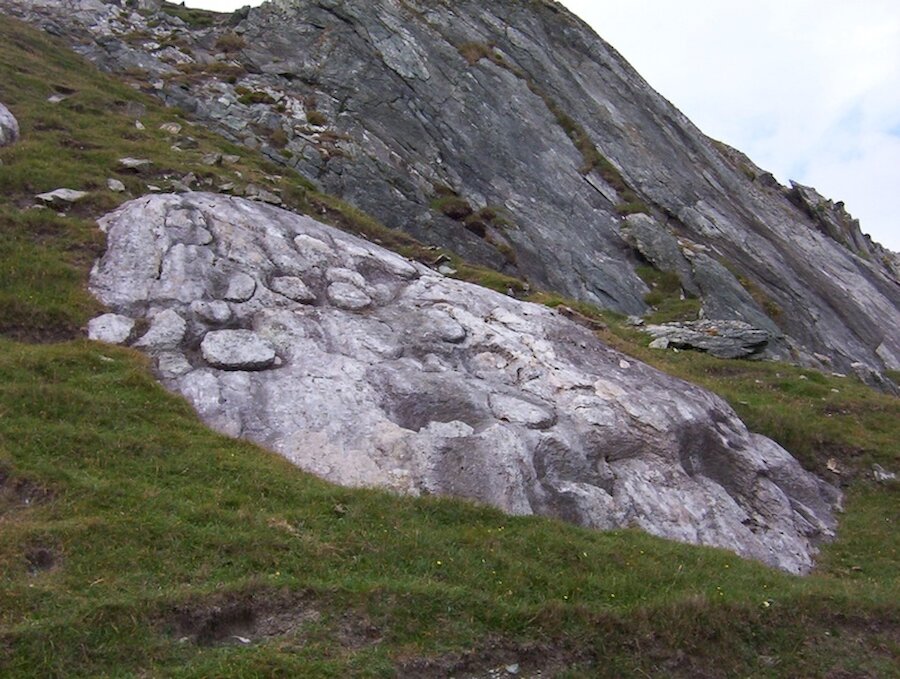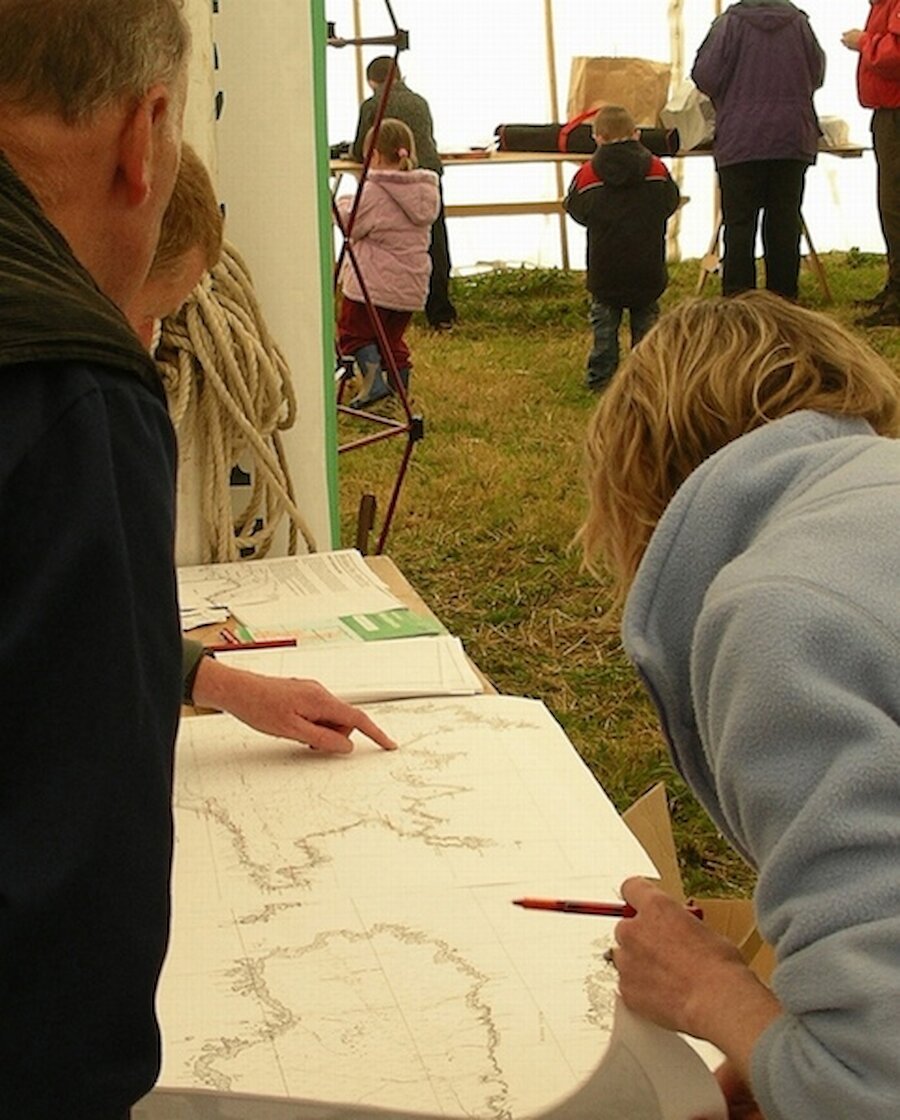As you study maps or travel through Shetland, you cannot fail to notice the place names. You may wonder how to pronounce them and what on earth they mean. As well as helping us find our way in the world, place names are an important component of our cultural heritage, providing vital clues about the environment, history, geography, and the people who lived here in the past: where they came from, what language they spoke and how they used the land.
Origins
Shetland's place names reflect our strong Norse heritage, with subsequent Scottish and English influences. Settlers from Norway arrived around 800 AD onwards, bringing with them a vast repository of highly descriptive words suitable for naming every feature of the landscape (both natural and manmade) as well as a stock of actual place names that were in use in Western Norway. Subsequently their names replaced most of the original names. The language they used was Old Norse (or West Norse) from which Norwegian, Faroese and Icelandic are derived. In Shetland and Orkney, a language called Norn developed and was spoken until the seventeenth century. This extensive period of Scandinavian influence resulted in the majority of place names in Shetland today having roots in Old Norse. These place names have many parallels in Orkney and the Western Isles and throughout Scandinavia. However, many names have been modified through time and spelling changes often mask the true origins. Listening to the local pronunciation can help point to the root word and therefore unravel the meaning.
Whilst many place names have been lost or forgotten over the centuries, vast quantities are preserved orally and are recorded in a wide range of documents. Shetland Amenity Trust's Shetland Place Name Project is trying to pull together all known sources and all previouslymaterial to help understand how our ancestors interacted with the landscape.
